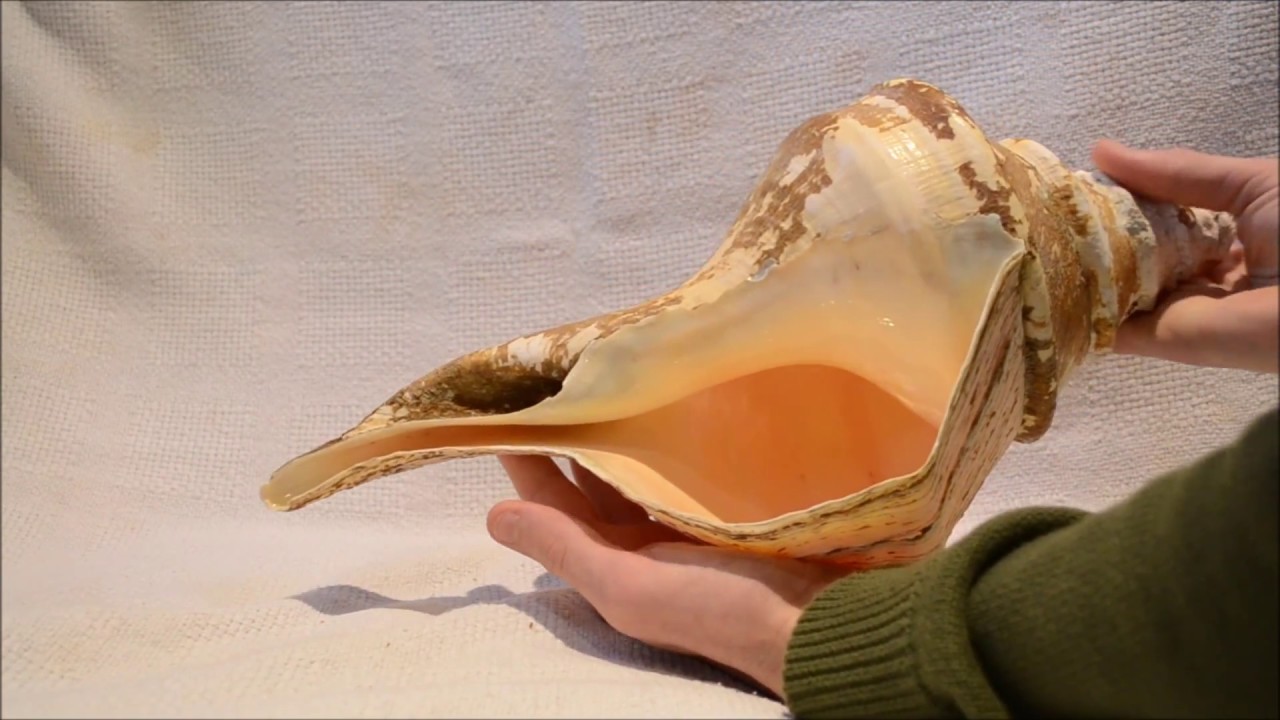Snails have spread across almost every part of the world, thriving in various environments except in harsh northern climates. Fortunately, most snails are relatively small. Otherwise, they could cause significant damage to the planet by consuming vegetation and crops.
However, some species grow to impressive sizes. So, which snails are the largest?
Giant Australian Trumpet
The largest known gastropods inhabit the tropical coastal waters of Australia, Indonesia, and New Guinea. These are Syrinx aruanus, commonly known as giant Australian trumpet snails.
These predatory gastropods are poorly studied due to their rarity. Their beautiful peach-colored shells attracted the attention of indigenous peoples, who used them to make unique ornaments and hairpins. Unfortunately, due to human activity, the population of giant Australian trumpets has significantly decreased.
The average size of an adult Syrinx aruanus:
- Shell height: 55-60 cm
- Diameter: 20-40 cm
- Body weight: 13-15 kg
The largest recorded specimen weighs 18 kg, with a spindle-shaped shell length of 91 cm. This record was documented by the Guinness Book of World Records in 1979.
These sea snails live in shallow waters on sandy seabeds rich in worms, which make up the bulk of their diet. Giant Australian trumpets can live for 60 to 80 years, which is about the same lifespan as a human.
Giant Tiger Snail (Achatina)
Among land mollusks, the largest are Achatina fulica. Due to their striking striped orange shells, they are often called “tiger snails.” Although their native habitat is the hot regions of Kenya and Tanzania, they are highly adaptable and have spread to other areas. The main requirement for their survival is plenty of moisture and soft, loose soil. If these conditions are not met, the snail retracts into its shell and enters a state of hibernation that can last from a few days to several years.
The average size of Achatina snails:
- Shell length: 5-10 cm
- Body weight: 250-500 g
Depending on the climate, the lifespan of tiger snails ranges from 5 to 10 years, provided they aren’t caught and eaten. Snail meat is a valued ingredient in tropical cuisine. However, their high reproduction rate ensures that Achatina fulica is not at risk of extinction.
The largest snail of this species was recorded in the Guinness Book of World Records in 1976. It was found in Sierra Leone and weighed just over 900 g, with a length of 39.3 cm (27.5 cm shell length, the rest being body).
These giant land snails eat everything they come across: greenery, fruits, vegetables, and even carrion, though they prefer plant-based food. This is why they are considered pests.
At one point, Achatina snails caused significant damage to farms in one of the U.S. states. Since then, keeping these snails as pets has become a criminal offense in certain areas.
Thus, there are giant snails both in the sea and on land. Despite their large size, even the biggest snails are completely harmless to humans.
